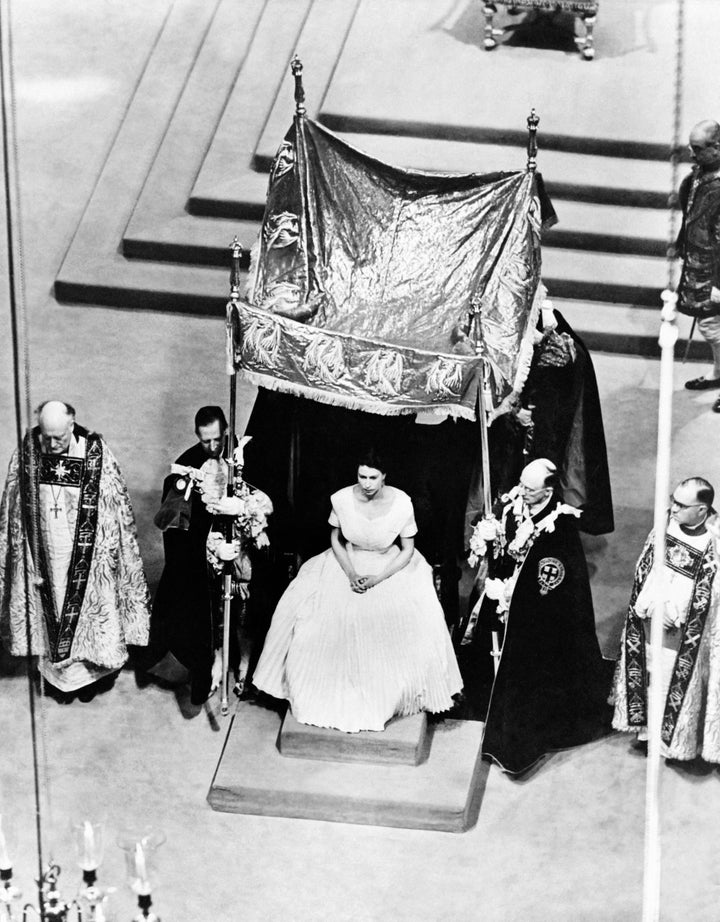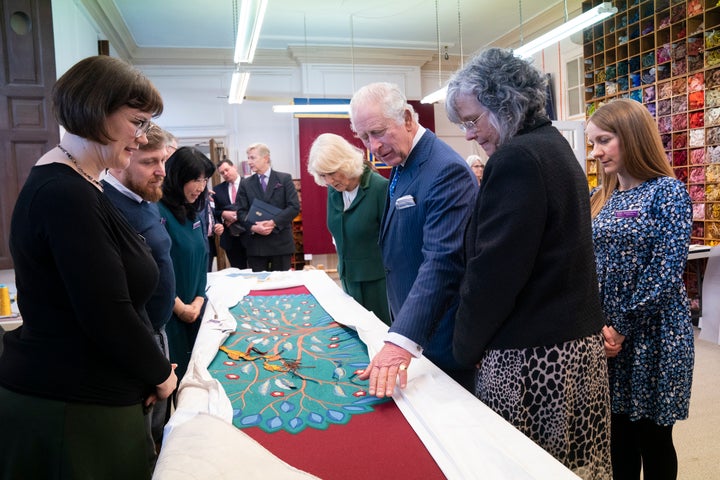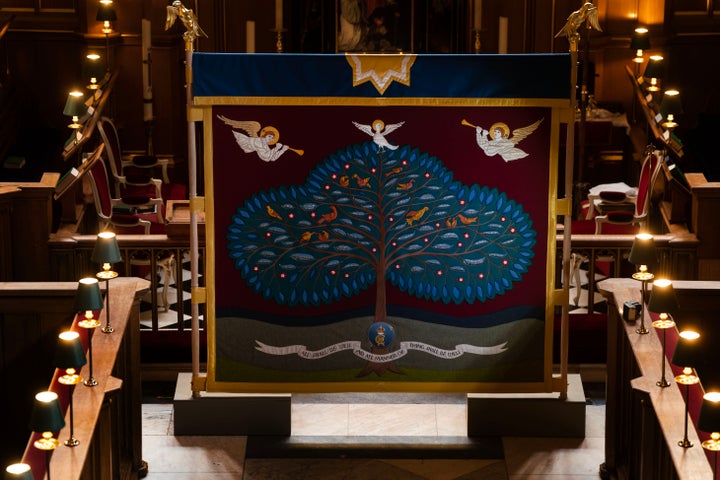All eyes will be on King Charles’s coronation in London this weekend, as 2,200 in-person guests and millions around the world tune in for the official crowning of the British monarch at Westminster Abbey.
The ceremony consists of six segments ― the recognition, the oath, the anointing, and the investiture (which includes the crowning), followed by the enthronement and the homage ― all of which have remained relatively unchanged for centuries.
But viewers won’t be able to see the king’s anointing, which is regarded as the most sacred part of the ceremony.
This is because it “has historically been regarded as a moment between the Sovereign and God, with a screen or canopy in place given the sanctity of the Anointing,” according to the official website of the royal family.
Indeed, during Queen Elizabeth’s coronation in 1953, she was covered by a canopy made of gold.

Patrick Allitt, a professor of American history at Atlanta’s Emory University, elaborated further on the anointing, telling HuffPost by email Thursday that “the idea is that the monarch is appointed not by the people but by God.” It’s a notion that he said “was held with special force in the 1600s.”
“I don’t suppose that anyone still believes that God chooses the king, but the British monarch is still the head of the Church of England,” Allitt said. “The secrecy surrounding the anointing is a way of emphasising that it is the symbol of a contract between King and God rather than King and people.”
This “underlines the idea that the king is more important than the ordinary folk and that he has a privileged link with the divine,” Allitt added. “Obviously the transformation of political and social customs has led Charles and the politicians to emphasise the inclusiveness of the coronation in most respects, but with this exception, which they are probably continuing as a concession to traditionalists.”
Charles will be shielded behind a new three-sided anointing screen during that part of the ceremony Saturday.
The screen was designed by iconographer Aidan Hart, completed by the Royal School of Needlework, and gifted by the City of London Corporation and city livery companies. Its main features are those of a tree, meant to represent the 56 member countries of the Commonwealth.

The anointing screen will be moved around Charles, who will be seated in the coronation chair during this portion of the Westminster Abbey ceremony.
The Dean of Westminster will pour a special holy oil ― which was consecrated in Jerusalem in March ― onto the coronation spoon.
Justin Welby, the Archbishop of Canterbury, will use the oil to anoint Charles on his hands, chest and head, out of sight from the in-person guests and those watching on TV. He will then say:
Be your hands anointed with holy oil.
Be your breast anointed with holy oil.
Be your head anointed with holy oil, as kings, priests and prophets were anointed.
And as Solomon was anointed king by Zadok the priest and Nathan the prophet, so may you be anointed, blessed and consecrated king over the peoples, whom the Lord your God has given you to rule and govern, in the name of the Father, and of the Son, and of the Holy Spirit. Amen.

After the anointing, the ceremony will proceed with the investiture and crowning.
More on King Charles’s coronation:
- Everything you need to know ― and look out for ― during Charles’s coronation weekend.
- Charles’ coronation concert will include some very unexpected guests.
- Prince George landed a major role at his grandfather’s coronation.
- The weirdest coronation items, revealed.
- Charles’ “swearing allegiance” controversy, explained.
- What does quiche have to do with the coronation?

